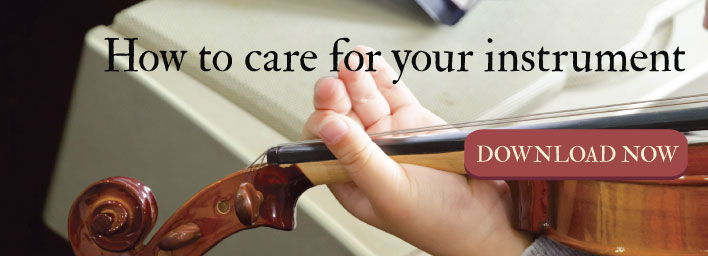How To Fix A Broken Violin Case Handle

Your violin case isn’t just a simple accessory. It serves a very real purpose. Your violin case protects your delicate instrument from hard knocks when you transport it, keeps your fragile bow safe, and it somewhat guards against fluctuations in atmospheric humidity that can cause violin seams to separate.
And although violin cases aren’t cheap, they’re not indestructible. One of the most common repairs is a broken handle. Naturally, this piece receives the most stress and almost every violinist has experienced a broken handle at one point. Either it comes off completely at the attachments, or gradually loosens over time until your duct tape, shoestring, or other make-do fix simply won’t work any longer.
When this happens, don’t worry. You don’t need to buy a brand new case, you merely need to have your case repaired at an instrument shop, or perform the repair yourself. It’s actually a very inexpensive and easy fix.
Let’s talk Replacement Handles
Many instrument dealers, specialty shops, and online stores carry a wide selection of instrument case handles. Prices range from a few dollars to around $30, depending on the style, size and material you prefer. Basic hard plastic is very common, but you can choose steel reinforced handles, or leather covered ones in a variety of colors. And although black and brown are fairly standard, there’s a replacement handle out there to match any violin case.
Also, keep in mind that many of the least expensive handles are sold without attachment hardware, so you may need to make a trip to your local hardware supply store to purchase the appropriately sized split rivets or screws to attach your new handle.
Measure your current handle and the space between the attachment brackets. It’s much easier to replace your handle if you can purchase one that conforms to the holes already drilled in your violin case. And measure the thickness of your violin case, plus the height of the bracket used to attach the new handle. The idea here is to purchase split rivets that will allow the “split” to land at the edge of your case thickness.
Performing the Fix—Wood-body Cases
You’ll need a few hand tools to conduct the repair, so if you’re a student, ask permission before diving into your Dad’s tool box. Gather:
- Needle-nose Pilers
- Ball-peen hammer or similar small hammer
- A small flat head screwdriver (or Phillips head if you’re using screws instead of split rivets)
- A small block of wood, or another hammer
The first thing to do is to remove your old, broken handle completely. Most case parts are attached using split rivets. They hold better and last longer than using regular screws. But, this means that you’ll need to remove them (if they’re still embedded in the wood). Gently pull back the case lining where the rivets are located to expose where they are anchored inside. With your small screwdriver, patiently work up the metal rivet “branches,” so that you can squeeze them back together using your pliers.
Note: Use this same technique to replace broken latches.
Once you’ve straightened the rivet, gently tap it from the inside of the case to work the old rivet out.
Next, place the new handle so that it aligns with the old holes. If you couldn’t (or didn’t) want to install a new handle exactly like your old one, it’s no problem, but you’ll need to mark drill holes that match your new handle’s attachment brackets. Drill your holes slightly smaller than the rivets’ diameter for a snug fit.
Now, install each rivet.
Gently tap the rivet (head side out) through the bracket so that the split part is exposed inside your case. Use needle-nose pliers to curl each metal “branch” back toward the case. Then place your wood block or additional hammer at the head of the rivet (on the outside) and tap the metal until the rivet’s branches are flush with the inside of your case. Repeat until you’ve installed all the rivets and then reposition your case lining.
Other Options
For metal violin cases, the appropriate sized screws and nuts can be used for handle replacements. Or, if you’re just not sure you want to do-it-yourself, take your case to a professional dealer. He or she will be able to replace your handle, as well.
Of course, you can use a broken handle as an excuse to purchase a newer, fancier case for your violin. And if you’ve been using a fabric case, this is the perfect time to upgrade to something more substantial. But you should still go ahead and repair your current case since it’s a great idea to have a back-up… just in case.
Replacing a violin case handle isn’t rocket science, anyone can do it, and you can too.


